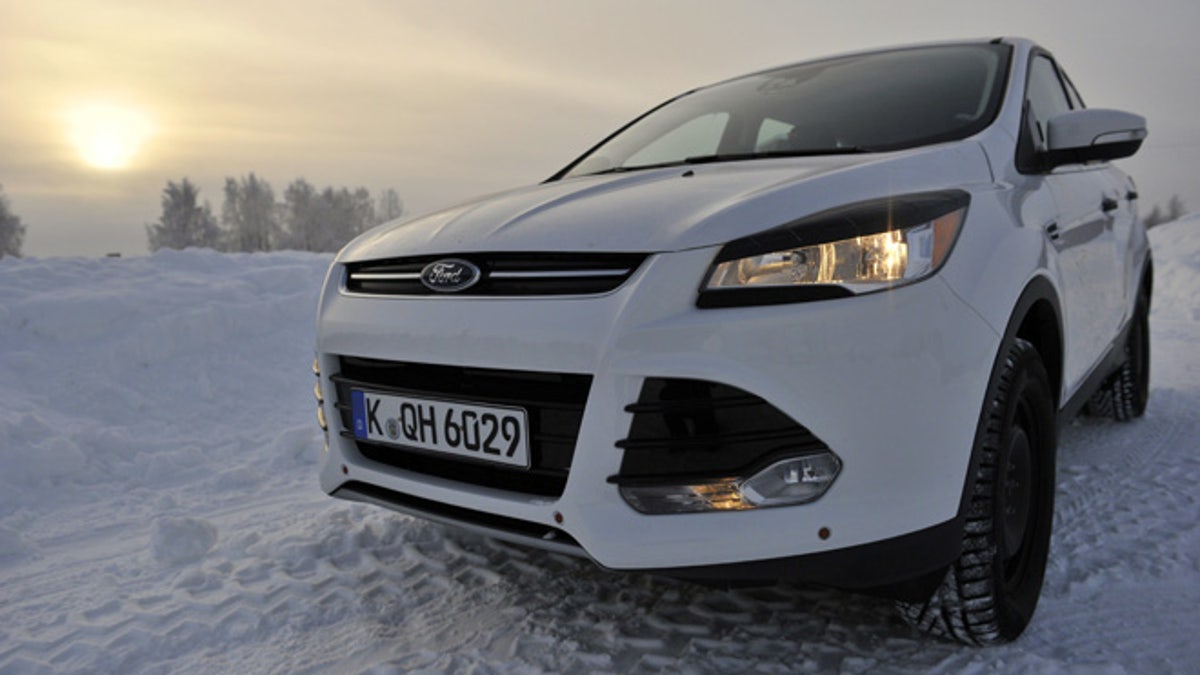
(Ford)
While some portions of the country may have unseasonably warm weather this winter, other areas will be hit with classic winter deep-freeze, coupled with high snowfall, drifting snow and blizzard conditions making driving a hazardous experience.
Since it’s not always possible to remain nestled in the safe and warm confines of home with the family during the winter months, the Car Care Council says it pays to be proactive by taking the following precautions and prepping your car to better meet wintry weather:
Perform system checks – Ensuring your car is adequately prepared to venture out in winter weather means making sure that the various systems are up to correct operating condition.
- Battery/charging system – Cold zaps battery life. Check to make sure the battery and charging system are at optimum performance.
- Brakes – Have the brakes checked. In all vehicles, the braking system is arguably the most important safety system. Without it working properly, you don’t stand a chance of stopping in time. With it at optimum performance, you have some measure of confidence.
- Cooling system – Make sure the antifreeze is adequate for the season. Car maintenance experts recommend the cooling system be cleaned, flushed out, and new antifreeze put in every two years.
- Exhaust system – Have the exhaust system checked for any carbon monoxide leaks as these can prove deadly during cold winter driving when all the windows are closed.
- Heating system – The last thing you want is to be on the road in sub-freezing temperatures and find that the car heater is on the fritz. Not only is driving uncomfortable in the cold, it can be unhealthy and even dangerous. Make sure the heater works as it should – before winter sets in.
- Windshield washer/wiper system – Along with checking and refilling the fluid level of the windshield washer system, also examine the wiper blades and replace, if necessary. Experts recommend replacing blades every six months.
- Lights – Make sure the exterior and interior lights work properly. Also check to ensure that headlights are properly aimed so that the road and any potential dangers ahead will be adequately illuminated.
Check tires for wear and/or replace – Check tire tread depth and tire pressure, the latter weekly during winter. If you live in an area that gets a lot of snow and ice each winter, consider replacing your regular all-season or high-performance tires with winter tires. Designed to provide maximum grip and control in low winter temperatures and on snow, slush and ice, winter tires have deeper tread depth, unique tread compounds, and specialized winter tread patterns.
Change oil and filters – While adhering to recommended intervals for oil changes is important, switching to so-called “winter weight” oil might be a good precaution, especially if you live in a cold weather climate. At the same time you have the oil checked and/or changed, have the technician check and replace fuel, air and transmission filters, if needed.
Keep the gas tank full – Before heading out on a trip of any duration this winter, even to work or school or the mall, make sure the gas tank is full. This helps prepare you to wait out storms or unexpected breakdowns and emergencies without running out of fuel.
Stock an emergency kit – Since you want to be prepared for the unexpected, keep the car stocked with necessary items you’ll need in an emergency. These include, but are not limited to: jumper cables, flashlights and batteries, snow brush, ice scraper, small shovel, blankets, extra clothing, nonperishable food, and bottled water.